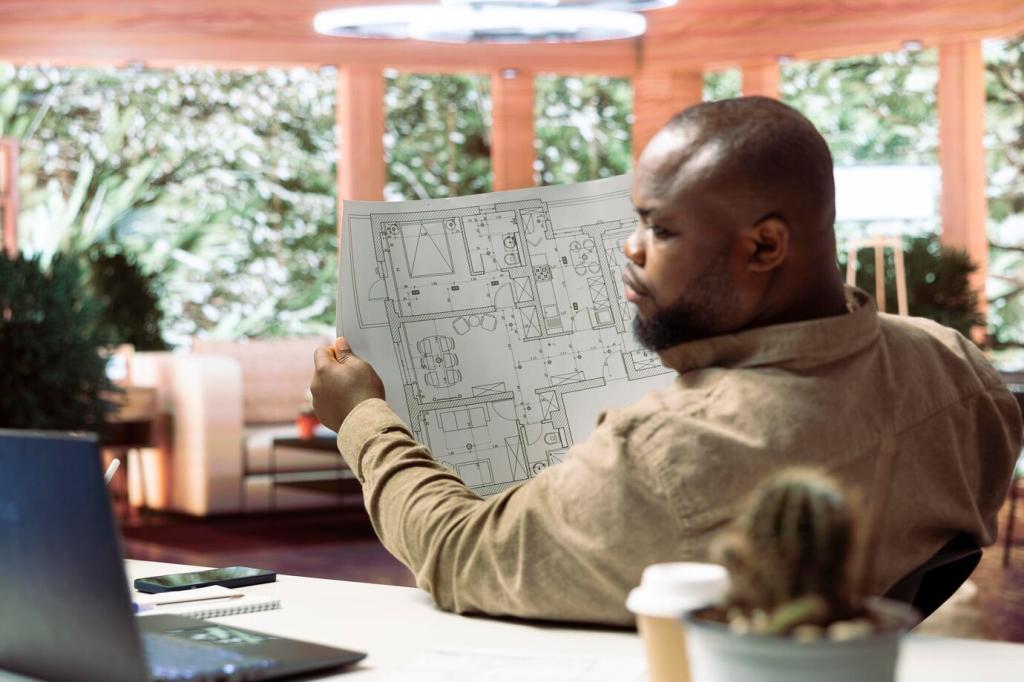Solar-Powered Building Skins: Today’s Chosen Theme
Chosen theme: Solar-Powered Building Skins. Explore how facades become clean-energy generators, blending architecture with photovoltaics to cut carbon, inspire cities, and empower occupants. Subscribe and comment with projects you love—your ideas will shape our next explorations.

From Cladding to Powerhouse: Understanding Solar-Powered Building Skins
A solar-powered building skin integrates photovoltaic cells directly into the envelope—walls, spandrels, louvers, and glazing—so that the surface both protects and produces. It aligns orientation, wiring, and mounting to harvest sunlight while respecting architectural rhythm, safety, and long-term durability.

Design and Aesthetics: Composing with Light
From deep blues to muted blacks, photovoltaic finishes now include printable patterns and ceramic frits that mask cells while preserving performance. Relief, reveals, and shadow lines add depth, allowing modules to read as intentional cladding rather than gadgets, aligning with contextual forms and city rhythms.
Design and Aesthetics: Composing with Light
Crisp edges matter. Designers align module seams with mullions, continue datum lines across opaque and glazed zones, and conceal wiring in pressure-equalized cavities. Thoughtful terminations at corners, parapets, and sills make the system feel crafted, not improvised, reinforcing longevity and pride in the envelope.


Performance, Modeling, and Real-World Payback
East and west facades catch morning and afternoon peaks, smoothing demand; south faces deliver steady output. Tilt and microclimate matter, as do reflections from nearby surfaces. Digital twins and weather files help estimate annual yield, guiding module layout before any anchor goes into the wall.
Performance, Modeling, and Real-World Payback
Solar skins change interior light and heat. Semi-transparent modules can reduce glare and cooling loads while maintaining views. Opaque areas hide insulation that improves thermal performance. Modeling daylight autonomy and cooling loads ensures energy gained on the facade doesn’t cost more inside the occupied spaces.
Retrofits and Case Stories: Lessons from the Field
A mid-rise office in Barcelona replaced aging stone spandrels with ventilated BIPV cassettes, boosting energy independence during summer peaks. Tenants noticed cooler interiors and quieter streetside acoustics. The project team documented each crane lift on social media, turning construction updates into a public sustainability lesson.


Retrofits and Case Stories: Lessons from the Field
A public school added a solar canopy that shades students and generates power for evening sports lighting. The athletic director reported lower utility bills and new STEM lesson plans. Students now track daily production, cheering on sunny days like game-winning streaks and sharing monthly graphs with families.
Operations: Maintenance, Durability, and Safety
Facade orientation and rainfall shape soiling. Designing maintenance anchors, tracks, or drones reduces labor and keeps yield high. Hydrophobic coatings help, but safe access plans matter most. Teams that share schedules and photos often spot underperforming zones early, protecting both aesthetics and kilowatt-hours over years.
Operations: Maintenance, Durability, and Safety
Thermal cycling, UV exposure, and wind-driven rain test every detail. Quality laminations, robust edge seals, and ventilated cavities extend life. Periodic thermography reveals hot spots before they cause failures. A durable solar skin isn’t lucky; it is meticulously designed, installed, and maintained with pride.


